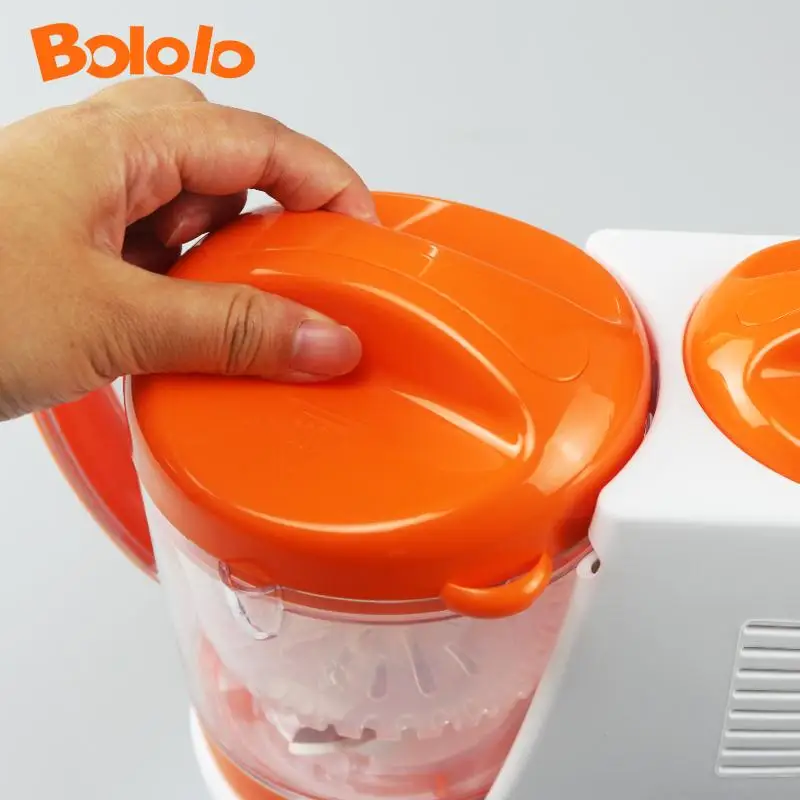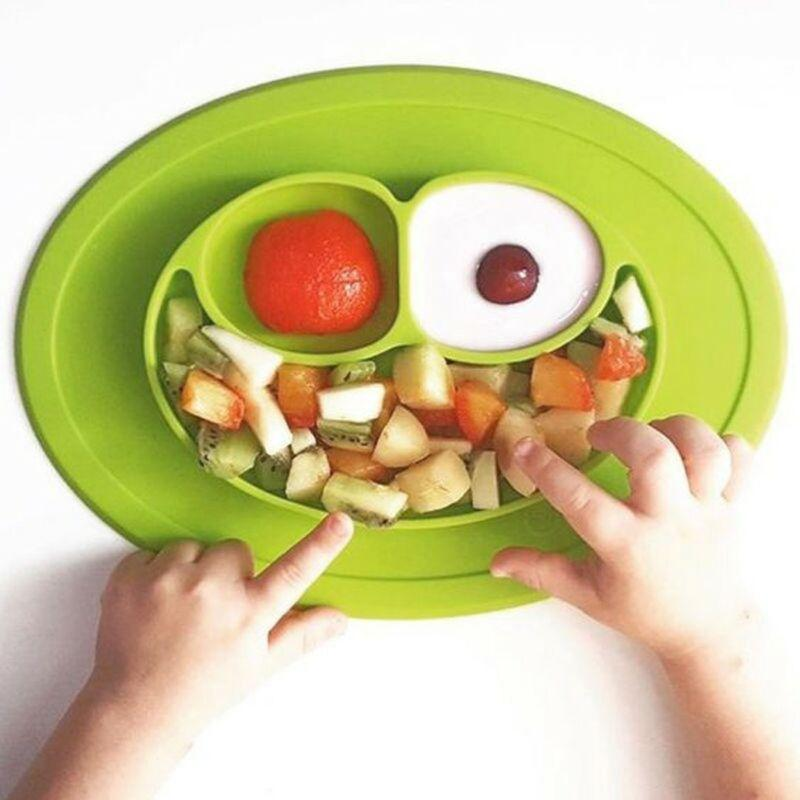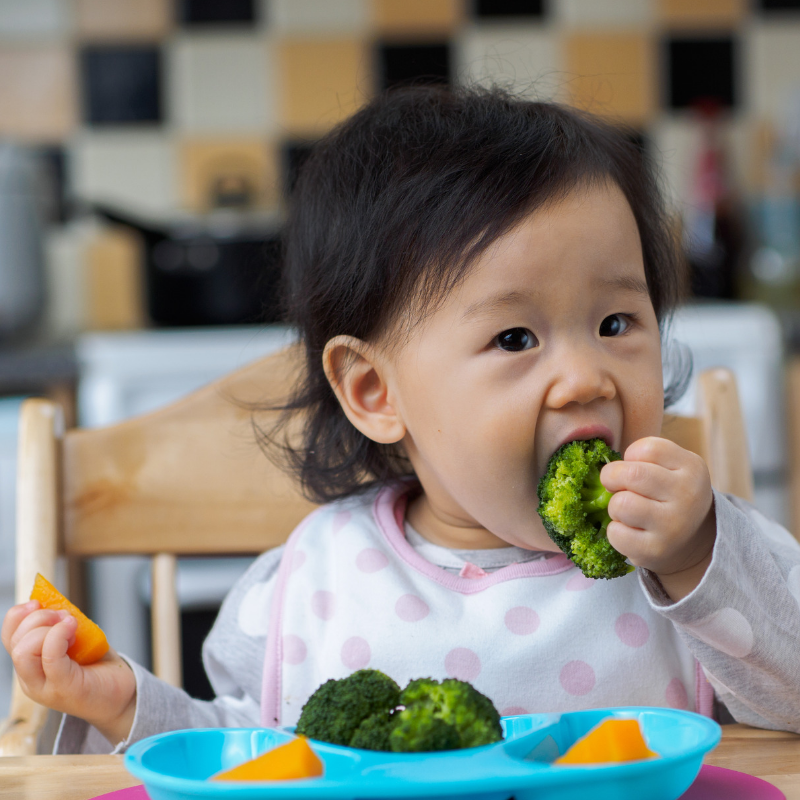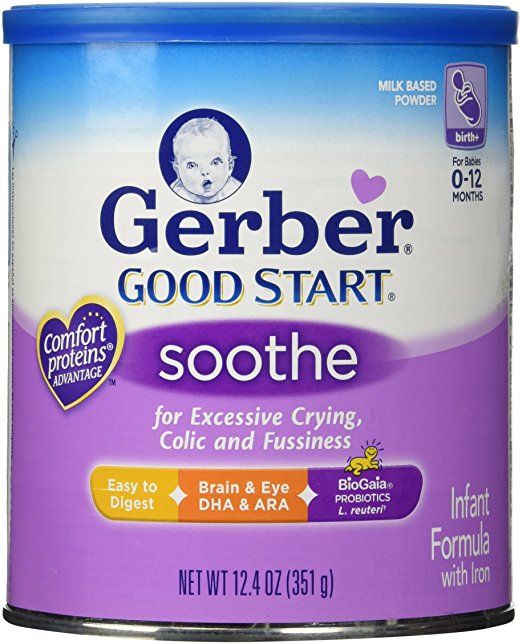Feeding babies beans
Age to Introduce, Best Types, Benefits, and More
Beans are highly nutritious and an excellent source of many nutrients, including fiber, folate, magnesium, and plant-based protein.
Even though beans are well known for their health benefits, parents may wonder whether they’re a good choice for babies.
Here’s look at the potential health benefits beans may provide your little one — and how to safely add them into your baby’s increasingly diverse diet.
You can start introducing foods other than breast milk and formula to your little one around 6 months of age. After 6 months, it becomes more difficult for babies to get all the nutrients they need from milk alone. Plus, this is the age at which most babies are developmentally able to handle foods with textures and nutrient compositions that are different than those of milk.
Breast milk or formula should continue to be your baby’s main calorie source.
In fact, it’s suggested that breast milk and/or formula (or cow’s milk after the age of 1) provide one-half of your baby’s energy needs between the ages of 6 and 12 months, and one-third of their energy needs between the ages of 12 and 24 months.
Baby’s first foods should be nutrient-dense and especially rich in several important nutrients, including iron, protein, and calcium.
What’s more, your baby’s ability to handle foods of different sizes and textures changes as they age. While younger babies do best with puréed foods or pastes, older babies can typically handle foods of different sizes and textures, as long as the food is appropriately and safely presented.
Beans and lentils are a good choice for babies because they’re:
- nutrient-dense
- soft
- able to be puréed easily
- typically bland
- able to pair well with many different flavors
Beans can usually be added to your baby’s diet around 7 to 10 months of age.
Beans are highly nutritious and associated with many health benefits. For example, beans offer an excellent source of fiber.
Adding fiber-rich foods like beans to your baby’s diet can help reduce their risk of constipation and promote healthy bowel movements.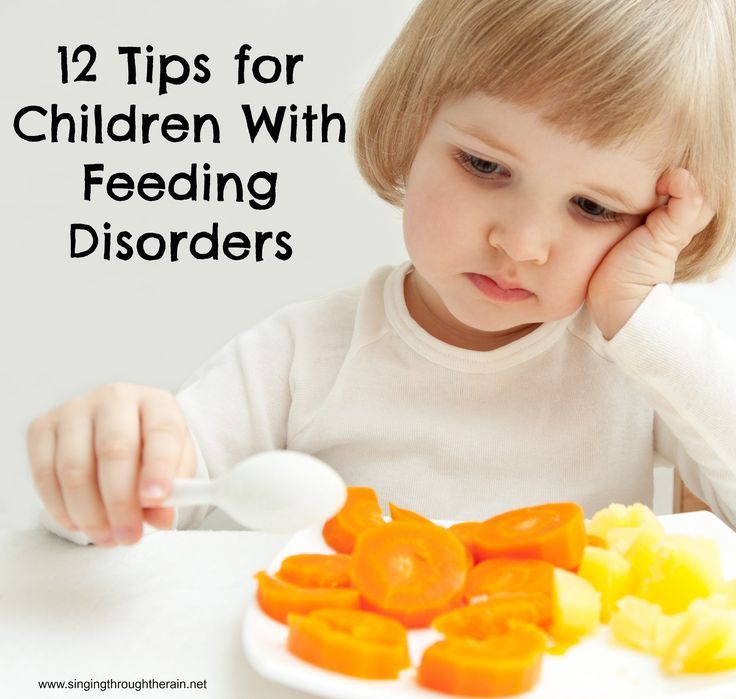 Plus, the specific fibers found in beans help promote a healthy population of gut bacteria.
Plus, the specific fibers found in beans help promote a healthy population of gut bacteria.
Also, studies show that babies and young children with high fiber intakes generally consume more nutrients — including iron, magnesium, and potassium — than babies and young children with lower fiber intakes.
In addition to fiber, beans are packed with nutrients that are critical for your baby’s health, including:
- iron
- magnesium
- potassium
- calcium
- folate
- zinc
They’re also a great source of plant-based protein.
Even though beans are highly nutritious, they should be one of many foods that make up your baby’s diet when weaning. The key to providing a balanced, nutritious diet for your baby is ensuring that they’re exposed to an array of foods that offer a variety of nutrients.
There are a number of legumes, including beans and lentils, to choose from. Some good choices to offer your little one include:
- black beans
- garbanzo beans
- kidney beans
- pinto beans
- red lentils
- cannellini beans
Keep in mind that some legumes are associated with food allergies more than others. For example, peanuts and soybeans are common food allergens. According to the American Academy of Pediatrics, there are different recommendations regarding when to introduce these foods based on your baby’s risk of allergy.
For example, peanuts and soybeans are common food allergens. According to the American Academy of Pediatrics, there are different recommendations regarding when to introduce these foods based on your baby’s risk of allergy.
For this reason, it’s best to consult your pediatrician for advice on when and how to introduce soybean and peanut products to your baby.
Choosing dried beans over canned beans may be the best option, as canned beans tend to be loaded with sodium that’s unnecessary for you, let alone your little one. Bonus: Dried beans and lentils are usually more affordable.
Use simple preparations when introducing beans and lentils to your baby. Simply cooking the beans, puréeing or mashing them (depending on your baby’s age), and offering them plain is best. Mixing them with a fruit, vegetable, or protein source that you know your baby likes may increase the chances of acceptance.
Beans and lentils contain compounds called antinutrients, such as phytic acid and lectins. Antinutrients can make it harder to digest some nutrients, such as iron, calcium, and magnesium.
Antinutrients can make it harder to digest some nutrients, such as iron, calcium, and magnesium.
Fortunately, prep methods like soaking, cooking, and sprouting significantly decrease antinutrients in beans and lentils.
You can purchase sprouted legumes online or in natural food stores and prepare them as you would regular beans and lentils. You can also sprout seeds at home using these directions.
Thoroughly cook all sprouted beans and lentils before offering them to your little one to protect against foodborne illness.
Baby-led weaning (BLW) is a weaning method that involves letting your baby:
- feed themselves
- control which foods they would like to try
- explore the textures and taste of different foods
Unlike traditional weaning, BLW skips puréed foods and instead starts with offering babies small pieces of whole foods from the start to encourage self-feeding. Although BLW has been linked to a variety of potential benefits, more research is needed to better understand both benefits and risks.
Beans are a popular food used by baby-led weaning enthusiasts. Beans and lentils can be made into mashes, bites, or simply smashed into smaller, more manageable bits. Making beans into a paste might be the safest bet for younger babies, as bean skins may get caught in your baby’s mouth or throat.
Check with your doctor if you’re unsure whether beans are a safe option for baby-led weaning.
There are a few things to consider before offering beans and lentils to your little one.
Beans are high in fiber and may cause digestive upset like gas and diarrhea if you give your baby too large of a portion. Start with a very small portion of a tablespoon or so when introducing beans to your baby and increase the portion over time.
Although beans are nutritious, they shouldn’t comprise the bulk of your baby’s diet. Remember to offer your baby a variety of nutrient-dense, whole foods to ensure they’re getting plenty of nutrients.
Lastly, although soybeans and peanuts are common allergens, most beans and lentils are unlikely to cause an allergic reaction in your baby. However, it can happen, so it’s always best to monitor your baby whenever you’re introducing a new food into their diet.
However, it can happen, so it’s always best to monitor your baby whenever you’re introducing a new food into their diet.
Beans can be a good choice for your baby’s diet. However, it’s essential to offer beans in safe and healthy ways that are appropriate for your baby’s age.
If you have questions about adding beans to your baby’s diet, talk to your pediatrician.
The Ultimate Guide to Beans for Babies
Jump to Recipe
Beans are terrific first foods for babies! Here's how to cook and serve to your baby along with plenty of recipes to help make introducing beans easy and fun!
Jump to:- When can babies eat beans?
- Health Benefits
- Do beans make babies gassy?
- Are beans safe for babies?
- Types of Beans- which one is best?
- But what about the antinutrients?
- Soaking Beans
- Cooking Methods
- Canned Beans
- How to Serve Beans to Babies (Baby Led Weaning)
- Bean Recipes for Babies and Toddlers
- Frequently Asked Questions
- How to Store Cooked Beans
- Cooking Beans for Babies (3 Methods)
When can babies eat beans?
If cooked to soft, beans can be offered to babies as soon as they’re ready to start solids, usually around 6 months.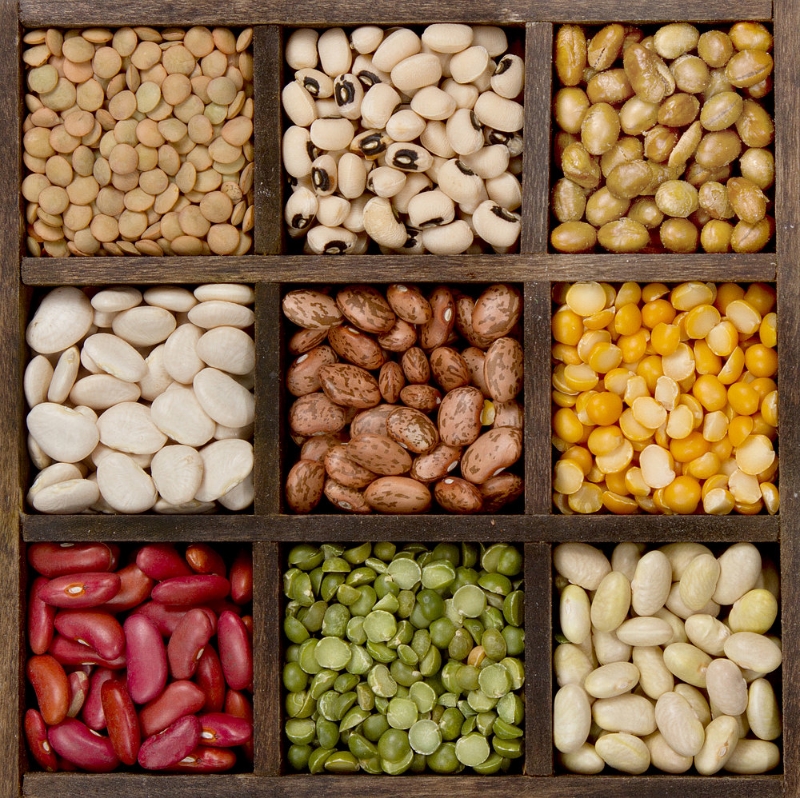 It’s important to remember that your baby is unique and that rather than going by the calendar, you need to make sure your baby is DEVELOPMENTALLY ready to start solids.
It’s important to remember that your baby is unique and that rather than going by the calendar, you need to make sure your baby is DEVELOPMENTALLY ready to start solids.
If you’re unsure, be sure to grab my FREE handout!
Health Benefits
Beans are classified as a legume (also called pulses), along with peanuts, peas, and lentils. This is a family that packs a powerful punch when it comes to nutrition.
Beans are SO great for babies! They are loaded with the essential nutrients babies need to grow and thrive, including iron, zinc, folate, protein, carbohydrates, and fiber.
Be sure to pair them with vitamin C rich foods to greatly enhance the absorption of iron!
And while colorful fruits and vegetables are considered to be the best source of phytonutrients, beans are also a great source for these antioxidant, anti-inflammatory, and other health-promoting compounds.
Related: Best Iron-Rich Foods for Babies and Toddlers
Do beans make babies gassy?
Foods that are rich in fiber tend to cause gas.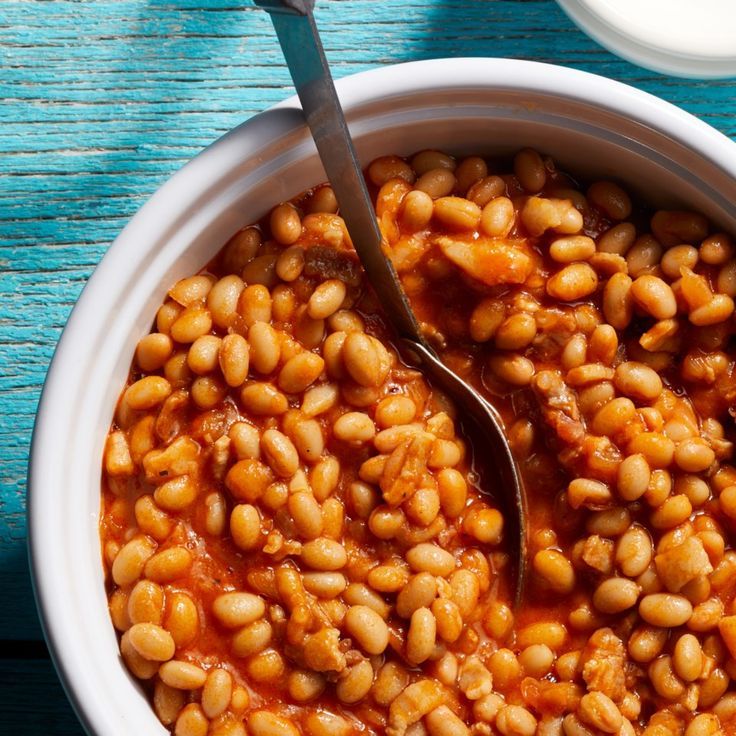 This list includes beans, cruciferous vegetables, oatmeal, prunes, peaches, and pears.
This list includes beans, cruciferous vegetables, oatmeal, prunes, peaches, and pears.
There's no need to avoid these foods completely as they offer so many beneficial nutrients that are essnetial for proper growth and development.
Not to mention, early introduction to a wide variety of flavors and textures is key in minimizing picky eating down the road.
Start by offering a small amount (1-2 tablespoons) and gradually serve more.
If your baby becomes gassy but doesn't seem to be in discomfort, there's no reason to worry. If your baby gets extra gassy after eating a certain bean, just don't overload them with those foods. You can also try different varieties as your baby may do better with certain beans than others.
For instance, my baby did well with all the beans that were served except for black beans. But after about 3 exposures, she seemed to tolerate just fine.
Are beans safe for babies?
Depending on the size and shape, beans can pose a choking risk.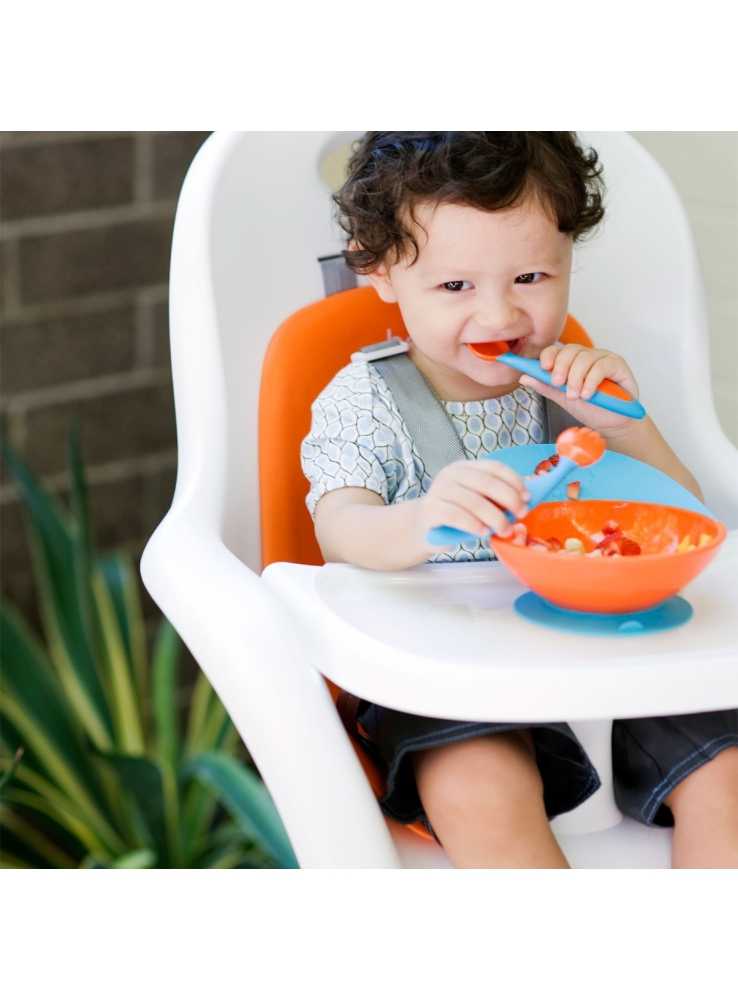 To reduce the risk, smash/flatten them, removing any skin that comes off. And follow the age-based serving suggestions shared below.
To reduce the risk, smash/flatten them, removing any skin that comes off. And follow the age-based serving suggestions shared below.
If you're cooking the beans rather than using canned, make sure they are soft and easily smushed between your thumb and forefinger.
It's also very important that you ALWAYS serve food at the table where your baby is sitting upright at a 90 degree angle. Even foods that aren't considered to choking hazards can be dangerous if given while baby is lying down, crawling, walking, etc.
In regards to allergies, soybeans are one of the top allergens so be sure to introduce them separately. While it's not impossible, an allergy to the rest of the beans is rare.
What to do when baby won't eat
Types of Beans- which one is best?
Did you know that there are nearly 400 types of beans?! Here are the most common ones that you're likely to find at the stores.
- Black Beans
- Black eyed peas
- Cannellini beans (or white Italian kidney beans)
- Edamame
- Garbanzo beans (chickpeas)
- Great Northern Beans
- Kidney beans
- Pinto beans
ALL beans are fantastic for babies.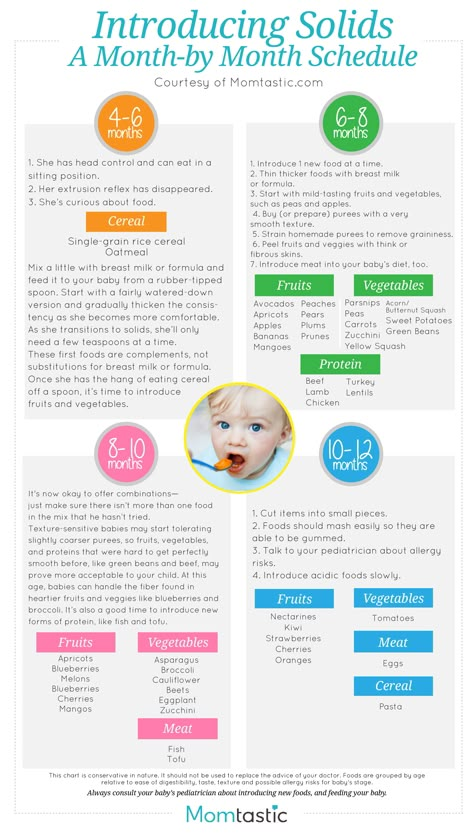 I highlighted the two essential nutrients during the first year in the chart above, and as you can see, they are pretty similar in their nutritional profile.
I highlighted the two essential nutrients during the first year in the chart above, and as you can see, they are pretty similar in their nutritional profile.
VARIETY is always best so give some love to as many beans as you can ;).
But what about the antinutrients?
It’s true that legumes contain antinutrients, such as phytic acid, lectins, saponins, and tannins, that reduce the absorption of certain nutrients, including iron, zinc, and calcium.
However, many other healthy foods, like grains, leafy greens, nuts, and seeds all contain antinutrients. So does this mean we should limit or avoid them? Of course not.
Instead, always aim for variety and balance! Unless beans are all you are serving to your baby, the benefits outweigh the risks of consuming antinutrients.
Not to mention soaking and cooking will decrease the amount of antinutrients significantly.
All this to say, DON’T WORRY!
Soaking Beans
after soaking for 8 hours overnightWhile it's an extra step, I highly recommend soaking. It will not only decrease cooking time but will also help the beans cook more evenly and make them easier to digest.
It will not only decrease cooking time but will also help the beans cook more evenly and make them easier to digest.
The beans will expand upon soaking so be sure to take this into account when choosing the size of the bowl.
Overnight soaking
Place dried beans in a large bowl, cover with water by 2 inches, discard any that float, and soak on the counter, covered, for at least 4 hours or overnight.
If soaking for more than 8 hours, transfer to the refrigerator. Drain and rinse before using.
Quick soaking
On the stove- Add beans to a pot and cover with water by 2 inches. Bring to a boil. Remove from heat and let soak for an hour. Drain and rinse before cooking.
Cooking Methods
Besides being nutrient dense, beans are inexpensive and last a long time in the pantry (hallelujah!).
Regardless of which method you choose, be sure to:
- Sort through the beans to remove any debris or shriveled beans.
- Rinse under running cold water to remove any surface dust or dirt
Cooking times will vary depending on the variety, age of the beans, and even the type of water you use. If your water has a lot of calcium, it can increase the time.
If your water has a lot of calcium, it can increase the time.
I’ve provided approximate cooking times. I encourage you to start checking for doneness at the beginning of the time range and then every 15 minutes thereafter.
Be sure to jot down the final cooking times somewhere for future reference.
On the Stove
- Add beans to a pot and cover with at least 2 inches of water.
- Bring to a boil. Then reduce heat to low and simmer, with lid slightly open, until tender.
- Stir occasionally. Do NOT try to rush the process by cranking up the heat. You will end up with a mushy exterior and undercooked interior.
Low and steady for best results! Add more water as needed so that the beans stay submerged.
It will generally take about 1-2 hours to cook. Start checking for doneness after an hour.
Slow Cooker
Cover beans with 2 inches of water. Set to low and cook for 6-8 hours.
Note - Kidney beans in particular contain a large amount of a toxin called phytohaemagglutinin (or kidney bean lectins) that doesn’t get destroyed when cooked in the slow cooker. That's because the temperature never gets hot enough.
That's because the temperature never gets hot enough.
Therefore, be sure to soak and then boil for at least 10 minutes before adding to the slow cooker.
Instant Pot
Add beans to Instant pot and cover with water to about 2 inches above the beans. Stir, close the lid, and cook on high pressure for 8-15 minutes.
Allow pressure to release naturally for 15 minutes.
Here are the cooking times for the beans I cook most often:
- Black beans: 8-10 minutes
- Cannellini: 8-10 minutes
- Chickpeas: 10-12 minutes
Canned Beans
While dried beans are less expensive, canned ones are so convenient and great time-savers since they are fully cooked. They are just as nutritious as the dried beans.
I used to cook them all the time, but now that I'm a mom of two, I will take all the help I can get!
Be sure to look for ones that are labeled "no salt added" or "low sodium" and that come with non-BPA lining. Rinsing them in running water can lower the sodium content even more.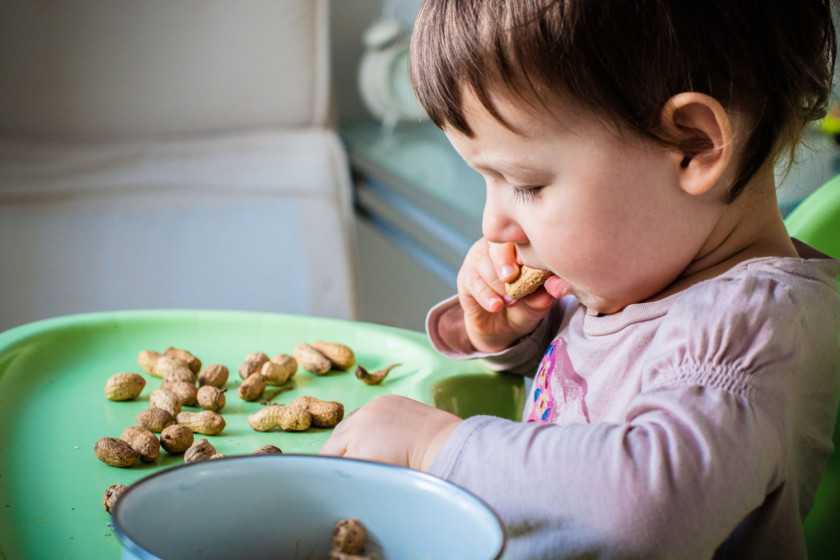
How to Serve Beans to Babies (Baby Led Weaning)
I could do a whole post on this as beans go well with so many different foods and flavors! Here are some EASY and nutritious ways to add them into your baby's diet.
6-9 months old:
You can try serving whole beans. Just be sure to flatten using your fingers or the back of a fork, removing any loose skin in the process. But if this makes you uncomfortable, don't do it! I am a big believer in know all things and then follow your heart.
You can also puree/blend or mash. The consistency is pretty thick and dry so add some breastmilk/formula to thin it out.
And here are some fun and EASY ways to boost nutrition and introduce your baby to a ton of flavors and texture in one bite. Add beans to:
- Yogurt
- Avocado
- Mashed sweet potatoes
- Mashed butternut squash
- Oatmeal - follow the recipe and then add the beans once cooked
- Lentils
- Hummus/Dip (recipes linked below)
Pictured above are the exact meals I served to my baby during her first month of starting solids. I actually filmed EVERYTHING I made for her as well as my toddler, husband, and me from Day 1 to Day 84 (so 3 months) in real time and turned it into an easy to access and follow program!
I actually filmed EVERYTHING I made for her as well as my toddler, husband, and me from Day 1 to Day 84 (so 3 months) in real time and turned it into an easy to access and follow program!
9+ months old:
I encourage you to continue offering mixed foods before your baby becomes more selective. If they’ve never had foods touching and mixed together, it will be much harder to get them to eat these later on.
I've included plenty of family-friendly meals to help get you started! Continue to flatten chickpeas and all other round varieties.
If you haven't already, this is a good time to introduce utensils (linked our favorites).
12+ months old:
Anything goes at this age! My personal favorite is adding whole beans to my son's school lunch boxes. SOO easy and convenient.
Related: Lunchbox Ideas for Preschool
Bean Recipes for Babies and Toddlers
Dips/ Sauce
- Broccoli Hummus
- Beet Hummus
- Yogurt Black Bean Dip
- Beetroot Dip
- Pumpkin seed spinach hummus
- Nut -Free Broccoli White Bean Pesto
Finger Foods
- Chickpea Veggie Cakes
- Beet Muffins
- Pumpkin Bean Muffins
- Mexican Lentil Muffins
- Sweet Potato Chickpea Cookies
- Southwestern Oat Muffins
Lunch/Dinner
- Pizza Quesadilla with vegetables
- Chicken Quinoa Casserole
- Cauliflower Chickpea Soup
- Salmon Bean Salad
- Vegan Creamy Tomato Pasta
- Slow Cooker Lentil Chili
- Vegetarian Mexican Lentils
- African Peanut Stew
- Instant Pot Multigrain Rice
Frequently Asked Questions
Are beans hard for babies to digest?
While highly nutritious, they contain a lot of fiber, which can cause gas and diarrhea, if given in large portions. Therefore, when first introducing, start with 1-2 tablespoons and increase depending on your baby's response.
Therefore, when first introducing, start with 1-2 tablespoons and increase depending on your baby's response.
Can I season beans for babies?
Yes yes yes! Season away! I highly advise you to have fun with all kinds of herbs and spices. It’s such an easy way to invite variety and flavor, without the use of salt.
Can babies eat beans everyday?
They can. But since offering a wide variety of flavors and textures is so crucial at this stage, be sure to switch it up by incorporating any of the serving suggestions I've provided above.
How much does 1 pound of dried beans make once cooked?
You will end up with around 6 cups of cooked beans, which is equivalent to 4 (15 ounce) cans. This is why cooking at home is much more economical.
How to Store Cooked Beans
In the refrigerator
You can transfer to an airtight container/jar with or without the cooking water.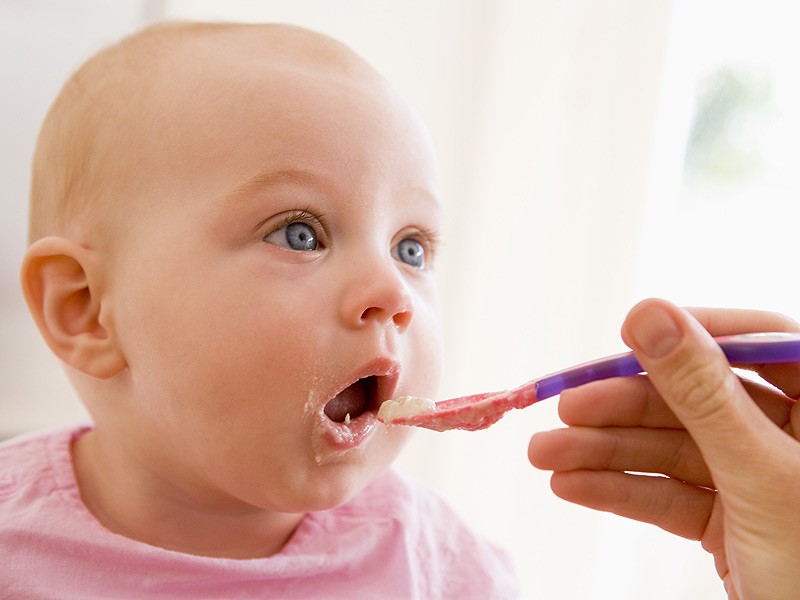
I've found that storing along with the liquid prevents the skins from drying out, but it's really up to you. If you intend to use for soup, the liquid also adds a nice yum factor.
Refrigerate for up to 5 days.
In the freezer
I recommend freezing in 1 ½ cup portions. A lot of recipes call for a 15 ounce can, which is roughly around 1 ½ cups.
If freezing with the cooking liquid, be sure to leave about 1 inch at the top for expansion.
Freeze for up to 3 months.
If freezing with the cooking liquid, be sure to leave about 1 inch at the top for expansion.
Do you want to minimize picky eating and set a solid foundation for a lifetime of healthy eating habits?
Check out this 3 month mastering self-feeding program! It’s the closest thing to me being in your kitchen
Did you make this recipe? Leave a rating below and let me know how you liked the recipe! Your feedback means so much to me!
Cooking Beans for Babies (3 Methods)
Beans are terrific first foods for babies! Here are three methods for cooking dried beans.
5 from 1 vote
Print PinPrep Time: 5 minutes
Cook Time: 1 hour
soaking time: 8 hours
Servings: 12 (makes about 6 cups)
Author: Min | MJ and Hungryman
- ▢
Instant Pot
- ▢ 1 pound (2 cups) dried beans
- ▢ Water or broth
Prepare the Beans
Sort through the beans to remove any debris or shriveled beans. Soak overnight or quick soak. Drain and rinse well.
On the Stove
Soak for at least 8 hours. Drain and rinse.
Place in a large pot and cover with water. Bring to a boil. Reduce the heat to a gentle simmer, and cook, covered with lid slightly ajar,. Skim off any foam that rises to the top.
It will generally take about 1-2 hours to cook. Start checking for doneness after an hour. Continue cooking until beans are tender.
Slow Cooker
Place beans in the bottom of the slow cooker.
 Cover beans with water. Close the lid and cook on low for 6-8 hours. See note if using red kidney beans.
Cover beans with water. Close the lid and cook on low for 6-8 hours. See note if using red kidney beans.
Instant Pot
Add beans to the Instant Pot. Cover with water and stir. Close the lid, making sure to turn the steam release valve to the sealing position.
Set the cook time using the Pressure Cook or Manual button, at high pressure. Keep in mind the IP will take about 15-20 minutes to reach pressure before cooking begins.
Cook for 8-15 minutes, depending on the variety. Allow the pressure to release naturally for 15 minutes. This will help beans retain their shape and avoids the liquid from foaming up into the steam valve.
If you find that beans are not as soft as you want them to be, put the lid back on, making sure the release valve is set back to "sealing" and cook at high pressure for several more minutes.
- When cooking beans for the first time, start checking for doneness at the start of the cook time range.
 Write it down for future reference.
Write it down for future reference. - If cooking kidney beans in the slow cooker, be sure to soak and then boil for at least 10 minutes before adding to the slow cooker to make them easier to digest.
- To store:
- In the fridge for up to 5 days in an airtight container with or without the cooking liquid.
- In the freezer: recommend freezing in 1 ½ cup portions. Freeze for up to 3 months.
Calories: 129kcal | Carbohydrates: 24g | Protein: 8g | Fat: 1g | Sodium: 2mg | Fiber: 6g | Sugar: 1g | Calcium: 46mg | Iron: 2mg
Course Side
Cuisine American
Tried this Recipe? Tag me Today!Tag me @KidFriendly.Meals today!
From what age can beans, peas be given to a child
Legumes are plant leaders in protein content
So, let's find out when to start introducing a child to legumes, which ones are preferable and in what form to give them?
Legumes combine the beneficial properties of vegetables and meat. Like other vegetables, they are rich in fiber, which means they have a beneficial effect on the work of the intestines. At the same time, the protein content in legumes can be compared with its content in meat, and therefore beans give a feeling of satiety for a long time. In addition, legumes contain a large amount of vitamins and minerals. For example, beans contain iron, potassium, calcium, phosphorus, magnesium, sodium, iodine, copper, and zinc. This plant has diuretic and antimicrobial effects. It is very important that even after heat treatment, beans retain about 70% of all useful substances.
Like other vegetables, they are rich in fiber, which means they have a beneficial effect on the work of the intestines. At the same time, the protein content in legumes can be compared with its content in meat, and therefore beans give a feeling of satiety for a long time. In addition, legumes contain a large amount of vitamins and minerals. For example, beans contain iron, potassium, calcium, phosphorus, magnesium, sodium, iodine, copper, and zinc. This plant has diuretic and antimicrobial effects. It is very important that even after heat treatment, beans retain about 70% of all useful substances.
Green peas are also rich in vitamins and trace elements:
- vitamin C
- B vitamins
- folic acid
- iron
- carotene
- magnesium
- selenium
Soy and lentils are much less commonly used in baby food. Meanwhile, soy is the leader among legumes in terms of nutrient content. It consists of 40% protein, which is digested no worse than animal protein.
Soy contains potassium, phosphorus, calcium, magnesium, sodium, iron, vitamins E, B1, B2, B6, D, beta-carotene, which ensure the proper development of the skeletal system, visual acuity, and skin elasticity. Such important components as choline, biotin, folic acid have a positive effect on mental activity. Soy is rich in beneficial carbohydrates, which are used as a source of nutrients by members of the normal intestinal flora.
Lentils are rich in magnesium, necessary for the normal functioning of the cardiovascular and nervous systems, as well as iron. Like other legumes, lentils contain B vitamins, as well as omega-3 and omega-6 fatty acids.
However, parents and pediatricians are in no hurry to introduce legumes into the child's diet. It is believed that they are quite heavy for a small tummy and can cause increased gas formation. True, this is more true for mature beans.
But with young green beans, a child can be introduced already from 8–9 months. It is better to start acquaintance with legumes with industrial production, since canned products are highly homogeneous, which makes them easier to digest. Start, as with the introduction of other products, with a minimum amount - half a teaspoon. Then, within a few days, increase the amount of the product.
It is better to start acquaintance with legumes with industrial production, since canned products are highly homogeneous, which makes them easier to digest. Start, as with the introduction of other products, with a minimum amount - half a teaspoon. Then, within a few days, increase the amount of the product.
However, children should not be given full portions of legumes until about 18 months of age. The taste of beans or peas is harmoniously woven into the tastes of other vegetables in multi-component purees. By the way, in the nutrition of grown-up babies, it should be taken into account that beans are much better absorbed with vegetables than with animal protein.
Choose a vegetable puree for your child
After two years, the child can already be given not only green beans, but also more mature ones. At the same time, the portion size also increases. True, legumes are still given infrequently and in pureed form - in mashed potatoes or mashed soups. Peas for baby food are used peeled. Shelled peas, the grains of which are split in half and partially freed from the shell, contain less coarse fiber, boil quickly and are suitable for young children. Lentils are used only red.
Shelled peas, the grains of which are split in half and partially freed from the shell, contain less coarse fiber, boil quickly and are suitable for young children. Lentils are used only red.
How to cook legumes? Sort peas, beans or lentils before cooking, remove debris and foreign matter. Rinse thoroughly in cold water, soak in cold boiled water for 3-4 hours. Then boil the beans in a large amount of water, with a vigorous boil without a lid. Add salt at the very end of cooking. It is advisable to make a puree out of them using a blender.
And then add butter and serve with vegetables, make puree soup or make pea or lentil meatballs. Do not give your child raw legumes, such as green peas. They contain toxic components that are destroyed by heat treatment.
Remember: your child's diet should be varied and balanced. The introduction of legumes in moderation will help to solve this problem.
Beans in the diet of children: from what age, recipes
› ›
Beans are quite often on the menu of families. It is added to soup, salads, side dishes. Parents of young children have a question: “When can a child have beans, which and in what form?”. I answer all your questions.
Green beans for babies from 7 months
Contents
- Complementary beans from 7 months to 3 years
- How to cook green beans for babies
- Red or white beans for babies from 3 years
- Bean consumption rate
- Popular bean dishes
The first time babies get acquainted with beans at 7-8 months, when parents feed them vegetable puree from a jar. Ready-made dish of green beans, potatoes and meat. Such a multi-component puree can be given up to 2 years, adding vegetable stew as an ingredient. Red beans belong to the solid food of the legume family. It is advisable to give it in a wiped form up to 3 years. Can be included in soups, vegetable stews. Use canned beans in cooking for children over 4 years old. After a year, you can not buy mashed potatoes, but cook soup-puree from green beans on your own. A child from 1 year old can easily digest this type of food.
Red bean soup for children
Vegetables for children
How to cook green beans for babies
- Soak green beans for 10-15 minutes in cold water.
- Boil the pods in a saucepan until tender, without closing the lid.
- Blend the cooked beans in a blender.
- We give 30 grams for the first time. If there is no bloating, the portion can be increased.
- Cooking beans for a child no more than once a week.
Red or white beans for children over 3 years old
Soak red or white beans in cold water for 3 hours. Boil in a large volume of water, without covering the pan with a lid. When ready, add salt. Then soup can be made from boiled beans. He will be more poignant. Grind the beans, it turns out mashed potatoes, you can make pate, stew. Up to 5 years, beans are only boiled or baked. After that, you can lightly fry the legumes with onions.
When ready, add salt. Then soup can be made from boiled beans. He will be more poignant. Grind the beans, it turns out mashed potatoes, you can make pate, stew. Up to 5 years, beans are only boiled or baked. After that, you can lightly fry the legumes with onions.
Introducing pea soup to a child
Benefits of beans for children
- A source of protein similar to meat and milk. It is not inferior to meat dishes in quality and quantity.
- Beans contain rare vitamins D and E, the lack of which has to be compensated by the inclusion of multivitamins.
- Beans are a dietary product. Approved for use in the presence of chronic diseases.
- Beans normalize blood sugar levels, remove excess fluid from the body, and prevent viral diseases.
- Beans contain phosphorus, which is responsible for healthy teeth and bones. Calcium, thanks to which healthy hair and nails grow.
Bean intake
- Baby gets ¼ teaspoon of bean puree for the first time.

- Up to a year, we increase the volume of the dish up to 50 grams.
- After 3 years can be given in a single serving up to 100 grams.
- The norm of eating beans is 1-2 times a week.
Beans tastes great with carrots, cauliflower, onions. Perfect as a side dish for any meat dish.
Popular bean dishes
Puree soup
- 150 grams of beans.
- 1 bulb.
- 15 grams of vegetable oil.
- 10 grams of flour.
- Greens to taste.
Cook beans until done. In a frying pan, simmer the onion in vegetable oil, add flour. Mix the fried onions with beans. Whisk the mixture in a blender. Boil in a saucepan for 5 minutes until pureed. We decorate with greenery. Soup puree is ready.
Vegetable stew with beans and chicken
- 250 grams of chicken fillet.
- 75 grams of beans.
- 1 bulb.
- 1 carrot.
- 150 grams of cabbage.
- 25 grams of olive oil.






